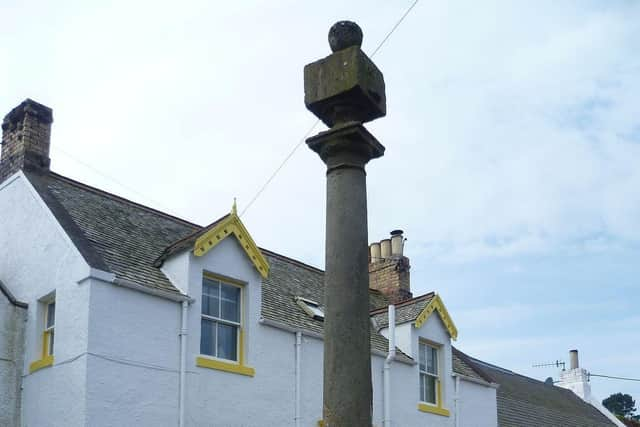Historic Berwickshire cross is set to be returned to its former glory
and live on Freeview channel 276
A planning application has been submitted to Scottish Borders Council for repairs and some rebuilding of the Mercat Cross, located on land north of Crosslea in School Road, Coldingham.
A cross was seen as a necessity for all market towns from medieval times onwards.
Advertisement
Hide AdAdvertisement
Hide AdThe present Coldingham cross, a category A listed structure, was erected in 1815 by Alexander Earl of Hume, Lord of Dunglass and Coldingham. The Hume crest appears below the sundial on the structure.


It is thought that the cross may have been placed at the location to mark the British victory at Waterloo on June 18, 1815.
‘Waterloo’ monuments in southern Scotland include a Mercat cross at Wigtown in Dumfries and Galloway, at public wells in North Queensferry and Edinburgh and a bridge at Haddington.
In the case of Coldingham, the neo-classical urn finial – a typical funeral motif – may commemorate the fallen at Waterloo.
Advertisement
Hide AdAdvertisement
Hide AdThe heritage significance of the sandstone cross derives from its prominent setting in the village and historic associations with the local community and the Earl of Hume.
A report submitted with the planning application by Edinburgh-based Addyman Archaeology, on behalf of Coldingham Community Council, outlines the repairs necessary.
They include work to the circular steps and the removal of the lower concrete step.
The report adds: “Previous instability of the cross is believed to be caused by minor subsidence and it is proposed that the base of the monument is excavated, under archaeology supervision, and more substantial footing put in place to ensure its stability.
Advertisement
Hide AdAdvertisement
Hide Ad“The repair and restoration of the cross should be carried out by skilled masons, as befits a category A listed structure. Only stonework that is beyond repair will be replaced in new stone and the profiles of the existing carefully matched.
“The column capital and base cornice are actively spalling and loose material will be carefully brushed back. All moss will also be carefully removed.”